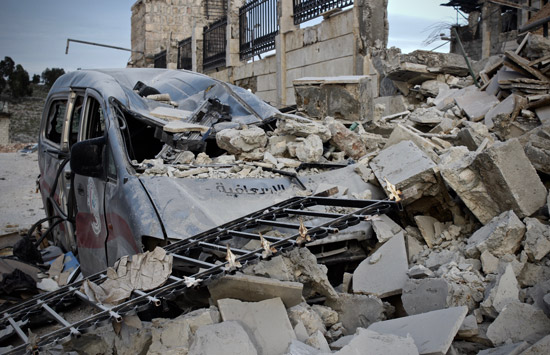Every 4 days in 2019, a health facility in Syria was attacked. A majority occurred in the northwest, where the world‘s most urgent humanitarian crisis continues to unfold.
 March 2020, Geneva/Copenhagen/Cairo – The World Health Organization condemns in the strongest terms, attacks on health care that have been a hallmark of the complex humanitarian crisis in Syria that this month enters its tenth year.
March 2020, Geneva/Copenhagen/Cairo – The World Health Organization condemns in the strongest terms, attacks on health care that have been a hallmark of the complex humanitarian crisis in Syria that this month enters its tenth year.
“The data we can now reveal on attacks on health in Syria is a grim testament to a blatant disrespect for international humanitarian law and the lives of civilians and health workers,“ said Richard Brennan, WHO‘s Regional Emergency Director in the Eastern Mediterranean.
Of all armed conflicts across the globe, Syria has for years been one of the worst examples of violence affecting health care. Intentionally attacking sites where the sick and wounded are treated, to either restrict or deny civilians access to health care, is prohibited under international humanitarian law. Indiscrimate attacks in civilian areas can also result in damage to health care, reflecting a callous disregard for lives and welfare of the most vulnerable.
“What is troubling, is that we‘ve come to a point where attacks on health – something the international community shouldn‘t tolerate - are now taken for granted; something we have become accustomed to. And they are still taking place. Only 2 weeks ago, 2 hospitals in Idleb governorate were carried out, injuring 4 health workers and temporarily suspending services,“ said Brennan.
A total of 494 attacks on health were confirmed between 2016 and 2019,1 of which 68% or 337 attacks were recorded in Syria’s northwest; among the last areas in the country that are not under government control. The data show that attacks on health in Syria peaked in 2016 and were lowest in 2019, likely due to the reduced size of the area where active fighting was taking place. The fact that the northwest – Idlib, Aleppo and Hama – has suffered the lion’s share of attacks compared to other regions in Syria, is notable. In 2019, 82% occurred in the northwest, 49% in 2018, 58% in 2017 and 85% in 2016.
The total death toll in attacks on health care in Syria between 2016 and 2019 is 470, peaking in 2016 with 241 confirmed deaths. The lowest number of deaths recorded was in 2019 at 54, again due to the reduced territory undergoing military operations. Northwest Syria represents the highest total numbers of deaths in those 4 years – 309 or 66%.
In addition to the deaths, 968 people were injured by these attacks across Syria since 2016; many of whom have been left with permanent disabilities.
“A clear example of how conflict impacts an individual’s right to health is northwest Syria, where today only half of 550 health facilities remain open either due to insecurity, damage from previous attacks, threats of future attacks, or surrounding areas being completely deserted as people are forced from their homes,” Brennan marks.
“Health facilities are now the least safe places in the area,” said one physician, a few days after 2 hospitals in Darat Izza were hit in an airstrike on 17 February 2020. Another physician working in a child and maternity hospital in Harim in Idleb governorate, described to WHO how he and his medical team worked in constant fear of shelling.
In September last year, an internal UN Board of Inquiry started investigating a series of incidents in northwest Syria, since the signing of a Memorandum on Stabilization of the situation in the Idlib De-escalation area between the Russian Federation and the Republic of Turkey on 17 September 2018.
The investigation covers destruction of or damage to facilities on the deconfliction list, containing UN-supported humanitarian sites such as health facilities. The previous month, two thirds of the United Nations Security Council requested an inquiry based on the suspicion that making their location public through deconfliction had made these facilities a target and that some of the attacks had been deliberate. The Board of Inquiry has yet to present its findings.
So far, in 2020, confirmed attacks on health in Syria are 9 – all of them in the northwest - resulting in 10 deaths and 35 injuries.
For more information:
Hedinn Halldorsson
WHO Gaziantep
+90 538 544 29 57
Inas Hamam
WHO Regional Office for the Eastern Mediterranean
+20 01000 157 385
_________________________
1. Two systems for data collection of attacks on health care were used within this period; secondary data from WHO‘s Health Cluster in Syria and findings previously published in the Lancet, covering 2016-2017, while WHO‘s Surveillance System for attacks on health care (SSA) covers 2018-2019. The two systems are compatible in that the basic methodology used for verification of incidents was the same.








